Introduction: Dogs of Australia
In this post, we explore the beautiful dogs from down under. Australia has some of the most incredible flora and fauna in the world.
The Australian Dingo is the first dog to arrive in Australia some 4000 years ago. Came along with early settlers from Asia.
When the Europeans arrived, they brought with them dogs. People like Thomas Simpson Hall crossed these early dogs with Dingoes to produce the best cattle dogs that the world has ever seen. This post is a celebration of the fantastic Australian dogs.
History of dogs in Australia
Australia is a country that loves and protects its animals. Dogs in Australia enjoy a privileged life. They are loved, cared for, and cherished.
There are two groups of dogs in Australia.
- Dingoes (Canis lupus dingo)
- Domestic dogs (Canis lupus familiaris)
Dingoes are the oldest breed of dogs in Australia. Dingoes came to Australia from Asia 4000 years ago. The domestic dogs came along with European settlers some 200 years ago.
Aboriginal people used the Dingoes for hunting, guarding, and as companion animals. The rock paintings found in the Laura region in Queensland show the relationship between dogs and Aboriginal people.
Australia’s diverse landscape has resulted in some fascinating dogs, such as the beautiful Australian Halls Heeler, the working ACD, the fast Staghound, and several others.
Native Australian dogs and their ancestry
| Breed | Ancestors |
|---|---|
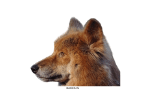 Dingo |  New Guinea singing dog |
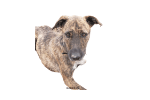 Australian Staghound |  Greyhound |
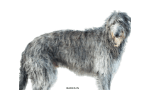 Scottish Deerhound | |
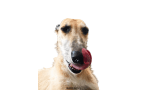 Kangaroo Dog |  Greyhound |
 Scottish Deerhound | |
 Australian Terrier | 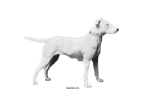 English Terriers |
 Halls Heeler |  Northumberland Drovers Dogs |
 Dingo | |
 Australian Cattle Dog |  Halls Heeler |
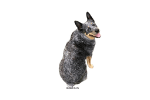 Australian stumpy tail Dog |  Halls Heeler |
 Australian Kelpie |  Collie Type |
 Australian Miniature Fox Terrier |  English Terriers |
 Australian Koolie |  Blue Merle Collie |
 Black and Tan Collie | |
 Tenterfield Terrier | 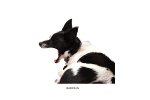 Miniature Fox Terrier |
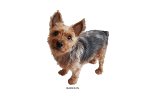 Australian Silky Terrier |  Australian Terrier |
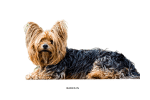 Yorkshire Terrier | |
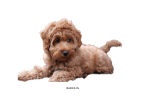 Labradoodle |  Labrador retriever |
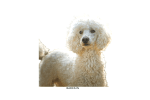 Poodle | |
 Bull Arab |  Bull Terrier |
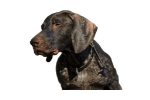 German Shorthaired Pointer | |
 Greyhound | |
 Beaglier | 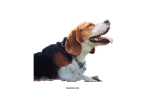 Beagle |
 Cavalier King Charles Spaniel |
Australian Dingo

History and Origin
The Australian Dingo is an iconic dog, one of the oldest breeds of dogs in the world. These magnificent dogs are the first dogs to arrive in Australia. Experts believe Dingoes reached Australia 4000 years ago. The earliest known Australian Dingo fossil date back 3450 years ago. Experts believe that Dingoes arrived in Australia along with seamen traveling from Asia.
Traits

| Classification | Unrecognized |
| Weight | 16 kg – 20 kg |
| Height | 52 cm – 56 cm |
| Coat | Single short-coat |
Dingoes have sighthounds like features, medium-sized, excellent sense of sight and smell, remarkable agility, and unrelenting stamina. These dogs have adapted to Australia’s harsh conditions and use speed, stamina, and agility for hunting their prey.
Dingoes occur in three colors light ginger, Black and Tan, and Creamy white. A scientific study found regional variances in Dingoes. For instance, the dogs from the north are bigger than the central and southern Dingoes.
Australian Dingo breed description

Dingoes are wild dogs and are active from dusk to dawn. Predominantly nocturnal, they prefer to hunt in the dark. Studies have found that they prey on mammals, birds, reptiles, and fish.
These dogs cannot differentiate between cattle and wild prey. They prey on sheep and cattle, resulting in conflict with people. A study found most graziers tolerate Dingo attacks, showing how intimately connected Australian people are to their wildlife.
Unlike other wild dogs that rely on its pack, these dogs are predominantly solitary. Their pack is smaller, composed of a male and female, along with their litter. Males are dominant when compared to female dogs.
Attacks on people are rare. However, there have been a few fatal attacks. A study found that the attacks are higher in Frazer Island and are due to people feeding these wild dogs.
Interesting facts about the Dingo

- Some researchers argue that Dingoes are responsible for the extinction of the thylacine, and the Tasmanian native hen.
- Dingo’s current conservation status is vulnerable. Interbreeding with domestic dogs has polluted the gene pool.
- Dingoes are a threat to livestock, which results in conflict with graziers.
- Australian law protects the Dingo in wildlife sanctuaries and national parks.
Halls Heelers

History and Origin
Halls Heelers are the legends of Australian dog breeds. This dog was the first cattle dog with exceptional strength, agility, and stamina. Halls Heelers is the foundation dog for many of Australia’s majestic cattle dogs.
In 1830 Thomas Simpson Hall in New South Wales established two cattle stations. To sell his cattle in Sydney markets, Hall and his brothers had to drove thousands of cows over thousands of kilometers. After having lost several cows during this long and arduous journey, Hall desperately needed droving dogs to help make this journey.
Thomas Hall brought in several Drover dogs from Northumberland. He then crossed these blue-mottled dogs with Dingoes he had tamed. After a few generations of selective crossbreeding, Hall finally had the dog he was hoping to produce.
Famously called the Hall’s Heelers, these dogs combined the intelligence and trainability of domestic dogs with strength and stamina of the Dingoes.
There is no clear consensus on which breed of domestic dog Hall used. Northumberland Blue Merle Drovers Dog was the local name for the dog that he crossed with his Dingoes. Experts believe these to be Collie-type dogs from England.
Traits
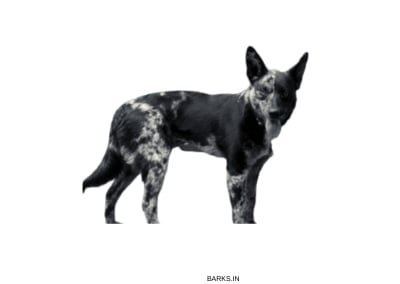
In the 18th century, people did not breed dogs to conform to any set standards. Instead, working ability, health, and trainability were preferred.
Halls Heelers is a medium-sized dog, trainable, and enduring stamina. These dogs were capable of droving the cattle over several thousand kilometers.
Interesting facts
- Halls Heeler was the foundation dog for most of the Australian herding dogs. The Australian Cattle dog, Stumpy tail dog, and the Kelpies have a Halls Heeler lineage.
- Halls Heelers are a cross between Dingoes and the Northumberland Blue Merle Drovers Dog.
- This dog nips at cattle heels; this trait earned this dog the name Heeler.
Australian Cattle Dog

History and Origin
The next dog on our list is the energetic ACD or the Hall Heeler. The Australian Cattle dog is a native Australian dog developed for droving cattle by Thomas Hall. He crossed the dog used by drovers with Dingoes to produce a hardy, intelligent, and trainable dog.
The name Blue Heeler or the Red Heeler is due to its beautiful coloring. The dog has either back or brown hair, which is mixed evenly with a white coat giving a blue or red appearance. They are known for nipping cattle at their heel, which earned them the name Heeler.
Blue Heelers need close supervision, primarily when among children, because of their tendency to nip running children. Dedication and loyalty are the hallmarks of this breed.
Traits

| Classification | ANKC: Working (Group 5); American Kennel Club: Herding |
| Weight | 15 – 22 kg |
| Height | 46 – 51 cm |
| Coat | Short, double-coat |
The ACD is compact, muscular, and an energetic breed of dog. The general appearance of the dog shows symmetry and balance with a well-conditioned muscle structure. This dog is rectangular, longer than tall.
The head is wedge-shaped with well-developed muscles on its cheeks. It’s head with almond eyes, and erect ears exhibit alertness.
ACD has a short double-coat and occurs in two colors, red and blue. Various combinations of red and blue along with tan, white and black markings also exist. Pups are born white, red, or blue hairs develop even as the dog matures.
Australian Cattle Dog breed description

All working dogs have high energy levels and exceptional stamina. The ACD is no exception, bred for droving cattle; these dogs can work for long hours non-stop.
ACD is one of the most trainable and intelligent dogs in the world. They are affectionate and protective of their family. Like all working dogs, these dogs require daily exercise. One way to keep them engaged is to teach these dogs new tricks. They are eager learners and cherish a challenge.
ACDs were bed to be independent and are wary of strangers. This trait makes them an excellent guard dog for the home. People who own this dog talk about the bond they form with the family. They remain close to people.
ACDs use their mouth more readily than other breeds of dogs. They were bred for nipping reluctant cattle, when untrained, these dogs can bite. A study by the Council in New South Wales found ACDs were responsible for 66 attacks and ranked 4th in the list of dog attacks.
Health
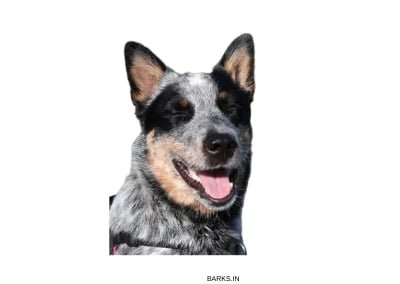
ACDs have an average life span of 12 to 14 years. Common health problems include congenital hereditary deafness, progressive retinal atrophy, muscle & skeletal issues, and reproductive issues. Studies on the lifespan indicate that ACDs live longer and remain more active than dogs of similar size.
Interesting Facts
- Texas Heeler is a dog in the US, which is a cross between the ACD and the Australian Shepherd.
- ACD’s are the 10th most intelligent dog in the world, according to Stanley Coren’s The Intelligence of Dogs
- The name Heeler is due to the dog’s behavior of nipping cattle’s heels.
- Unverified reports claim that a dog named Bluey lived to be 29 years old.
- Like the Bernese Mountain Dog, the ACD excels at herding cattle and livestock.
Australian Stumpy Tail Cattle Dog
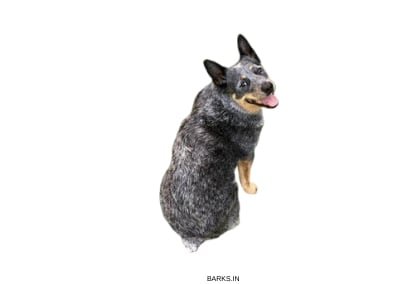
History and Origin
Australian Stumpy Tail Cattle Dog is another remarkable cattle dog from Australia. Genetic research on this breed has revealed the Smithfield herding dogs of England as ancestors of this dog.
These dogs have naturally bobbed tail, hence the name Stumpy tail dog. To a casual eye, this dog looks similar to the ACD; however, both are a distinct breed of dogs.
Renowned dog expert Noreen Clark in the book “A dog called Blue” traces the origins of the Australian cattle dog and the Stumpy tail dog. Noreen Clark argues that both these dogs diverged from the Hall Heeler.
Thomas Hall, a drover, crossed the Smithfield herding dogs with Dingoes to produce the Hall Heeler. Selective breeding of the bobtail dogs resulted in the Stumpy tail dog.
Traits
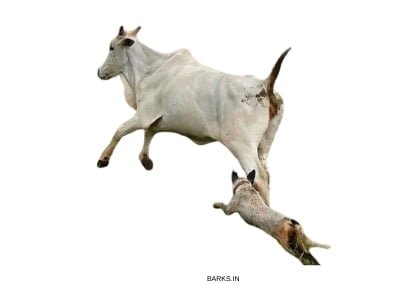
| Classification | ANKC: Working (Group 5); AKC: Herding |
| Weight | 16 – 23 kg |
| Height | 46 – 51 cm |
| Coat | Double-coat; medium to short in length and dense |
The Stumpy tail dog is medium-sized, agile, and with a sturdy build. They are muscular, a well-proportioned dog that lacks a fully developed tail. Most dogs are born without a tail. The rest have short tails measuring less than 10 cm.
The Stumpy tail cattle dog is lighter in weight than the ACD. These dogs also lack brown color, which is on the ACD.
The coat is short, dense, and shed their hair during winter. Shedding is unnoticeable due to their short hair.
Australian Stumpy Tail Cattle Dog breed description

This dog is alert, watchful, intelligent, and can be easy to train. Being a working dog, these dogs possess high energy and stamina and need regular exercise.
The Stumpy tail dog is an excellent guard dog. These dogs are wary of strangers, alter, and have a sharp bark. Non-working dogs that live in cities are excellent guard dogs.
Both ACDs and the Stumpies nip reluctant cattle. These dogs exhibit this behavior when among children and can result in minor injuries to children. Hence, teach these dogs to avoid this behavior, especially when they live in cities as pets.
Interesting facts
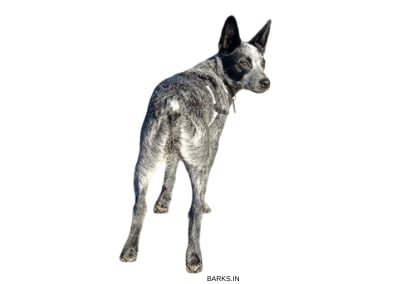
- The Australian cattle dog and the stumpy tail dog share a common ancestor, the Smithfield herding dog
- The name Heeler is due to the dog’s behavior of nipping cattle’s heels.
- Heelers are rugged and thrive in harsh environments. They can drove cattle for long hours without needing a break.
- Thomas Hall crossed drover dogs with Dingoes to produce a dog that was trainable and sturdy. Hall’s Heelers were the foundation dogs for this breed.
Australian Kelpie
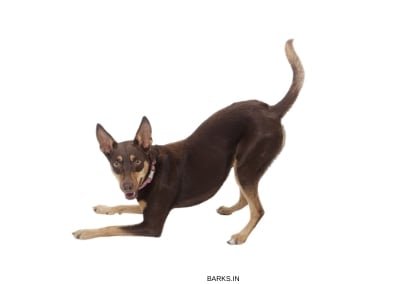
History and Origin
Kelpie is another magnificent dog from Australia. Kelpie’s ancestors were the collies. Highly intelligent, independent, and work rate are the hallmarks of this breed.
Kelpies are renowned for their ability to work, and some even call this dog a workaholic. Border Collies are the most intelligent domestic dogs in the world. Having descended from the Collies, the Kelpies posses a sharp and independent mind.
The name Kelpie is from the shapeshifting water spirit of Celtic folklore. The first Kelpie was born in 1872. It was a female black and tan pup owned by George Robertson.
When herding, they are known to jump on the sheep to reach the other side of the flock.
Traits
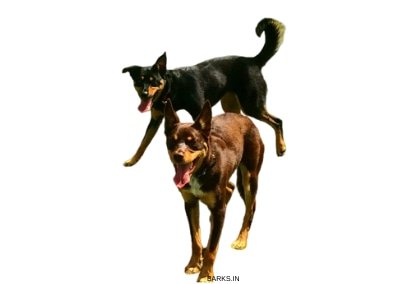
| Classification | ANKC: Working (Group 5) American Kennel Club: FSS |
| Weight | 14 – 20 kg |
| Height | 39 – 51 cm |
| Coat | Short double-coat |
These dogs are compact, powerful, and agile. The Kelpie is flexible and excels in agility and herding sports. The broad chest, compact feet, and a low set tail give these dogs exceptional balance.
Breeders emphasize the dog’s working abilities more than its appearance. This selective breeding process has resulted in dogs that excel in agility, intelligence, and stamina.
There are two strains Kelpies, the working, and the show strain. The show dogs are black, chocolate, black and tan, red and tan, fawn and blue. Their double coat protects them from the elements and is water-resistant.
Australian Kelpie breed description

The Australian Kelpie is one of the most successful herding and working dogs in the world. Kelpies are keen learners and eager workers. They learn subtle cues that their masters use to herd the sheep. A Kelpie is always ready to work; some even call them workaholic dogs.
Kelpies make excellent family pets and are good with children. Like all working dogs, they need proper socialization and training. Potential dog owners should remember that these dogs have high exercise requirements.
A Kelpie that does not get enough physical activity can become destructive. These dogs need an outlet to spend their built-up energy. With an excellent sense of sight and an alert disposition, the Kelpie is a good guard dog.
Health
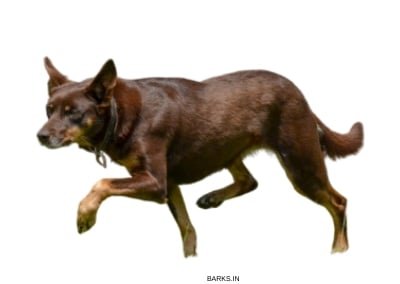
The average lifespan of these dogs is between 12 to 14 years. The following are some health ailments to affect this breed.
- Progressive Retinal Atrophy (PRA) is an eye ailment when untreated can cause partial or total blindness.
- Hip Dysplasia is a painful condition that affects the dog’s hips.
- Muscle and skeletal issues such as torn ACLs, elbow issues, etc. are seen in active dogs.
- Luxating Patella is another condition that this dog suffers from.
Interesting facts

- A descendant of the Collie, the Kelpie is highly intelligent.
- Kelpies are agile dogs known to jump on the sheep’s back to reach the other side of its flock.
- Kelpies excel in sheep herding. A single Kelpie is capable of managing an entire flock.
- People incorrectly assumed Dingoes as the Kelipie’s ancestors. A study in 2019 proved both dogs to be unrelated.
- Kelpies excel in many tasks such as search and rescue, tracking, and other service roles.
Australian Silky Terrier
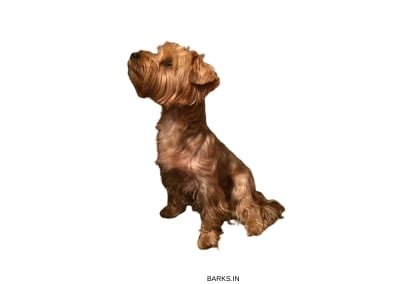
History and Origin
The Australian Silky Terrier is a small terrier-type dog from Australia. The Silky Terrier is a descendant of the Australian Terrier and the Yorkshire Terrier.
Found primarily in the Sydney region of Australia, they were also known as the Sydney Terrier. The Australian National Kennel Council officially recognized this dog in 1958 and classified them in the toy group. Despite being a Terrier, due to its small size, this dog is in the toy group. Unlike the typical Terriers, this dog is an indoor companion dog.
The Silky Terrier possesses an inquisitive and lively temperament. They are known to be stubborn and work based on mutual respect. Like most other small dogs, they can be possessive and are prone to resource guarding.
Traits

| Classification | ANKC: Toy (Group 1) AKC: Toy |
| Weight | 4 – 6 kg |
| Height | 23 – 26 cm |
| Coat | Double-coat, long and fine |
The Silky Terrier is a small breed of dog bred as a companion and vermin hunter. They are small, rectangular, and fine-boned dogs. The head is wedge-shaped, the top of the skull is longer than its muzzle.
The Silky has erect ears, docked tail, and small legs. Don’t mistake their small size for lack of agility. Selective breeding for Terrier-type makes these dogs agile and can jump high, despite their small size.
They derive their name Silky from their coat. The Silky Terrier’s coat is long up to 15 cm, dense, and grainy to the touch. These dogs require daily grooming as their hair forms mats and knots.
Australian Silky Terrier breed description

They are a loving dog, highly intelligent, loyal, and alter. These traits and their small size make them an excellent companion dog. The only downside to their character is their stubborn character. The Silky Terrier needs strong leadership; else, they assume pack leadership, which leads to resource guarding and aggression.
A well-trained Silky Terrier is a delightful companion and is good with kids. Pet owners need to remember; these are no pushovers, and generally don’t tolerate hair pulling or ear pulling by kids. We early socialization to get the dog accustomed to people in the household.
Health

The Silky Terrier is a healthy dog and not prone to many ailments. The average life span is between 13 to 14 years. PRA and other eye-related issues, skeletal issues such as hip or elbow dysplasia on older dogs, are some health concerns with this breed.
These dogs require regular grooming to prevent mats and tangles. Without proper grooming, they can lose their hair and can also result in skin issues. People who find it challenging to manage their coat trim it.
Interesting facts
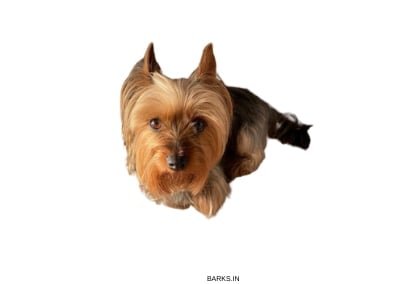
- Despite their small size, they are agile and can jump high.
- Yorkie and the Australian Terrier is the foundation dogs for this breed.
- These dogs have a lively temperament and need consistent leadership to prevent small dog syndrome.
- They are one of the most popular dogs in the world. All the major kennel clubs recognize them.
Australian Terrier
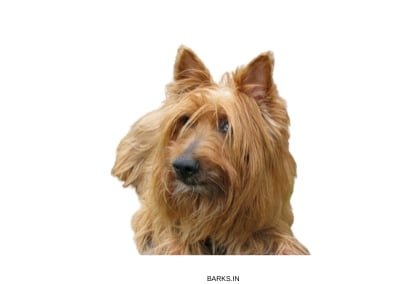
History and Origin
The Australian Terrier is a Terrier-type dog from Australia. When the English arrived in Australia, they brought with them several English dogs. The Australian Terrier is a descendant of these dogs from England.
Terriers, with their excellent sense of smell, alert disposition, were the ideal dogs for vermin management. Farmers developed this dog to control the mice and rat populations on farms.
Traits
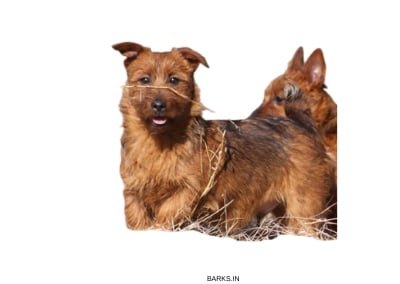
| Classification | ANKC: Terrier breeds (Group 2) AKC: Terrier breeds |
| Weight | 5 – 6.5 kg |
| Height | 23 – 25.5 cm |
| Coat | Double-coat, medium in length, hairy and harsh |
The Australian Terrier is a small-sized dog. They are longer than tall, with erect bat-like ears. Short legs and a long body gives them excellent balance. With a highly refined sense of hearing, they are a brilliant vermin hunter.
They occur in blue or silver with tan markings. The hair is short over the muzzle and neck. The fur on their back is medium in length and is rough to the touch. People traditionally dock their tail to prevent spinal injuries during vermin hunts.
Australian Terrier breed description
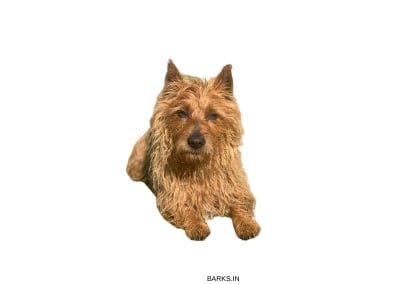
The Australian Terrier is a true Terrier, small, fearless, and game. These dogs are intelligent, easy to train, and make excellent companions. Fearlessness is the hallmark of this dog. They are unrelenting and seldom back down from a challenge. Pet owners need to prevent their dogs from getting into fights. Once they start, they don’t back down.
The Australian Terrier is an excellent companion dog and is good-natured. Your kids will love this dog’s spirit, patience, and good nature.
These dogs require daily walks to burn out unspent energy. One needs to remember these are Terriers with high prey-drive and will chase squirrels and cats.
Periodic grooming keeps their coat in top condition. These dogs are a moderate shedding breed. Bathing them dogs once a month should be sufficient. Frequent baths will remove the essential oils that their skin secretes and will result in dry skin.
Health

The average life span is 11 years. Studies and surveys on their health the average life span is less compared with other breeds of similar size. Generally, a healthy dog remains active throughout their life. The following are some ailments that afflict this dog.
- Allergies – These are curious dogs that sniff and run everywhere. They are prone to environmental allergies, such as dust and pollen.
- They suffer from eye-related issues such as cataracts, red-eye, etc.
- Being a small breed, they are prone to patellar luxation or kneecap dislocation.
- A study found 67% of the dogs died from cancer.
Interesting facts
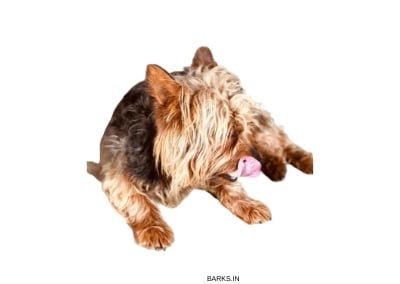
- Australian Terriers originated from Terriers brought from England.
- These dogs rank 34th in dog intelligence.
- They are excellent companion dogs, and good with kids.
Tenterfield Terrier

History and Origin
The Tenterfield Terrier is another magnificent Australian breed of dog. There is no consensus about the origins of this dog. There are several schools of thought about their ancestry. Some believe these dogs are a cross between the Miniature Fox Terrier and other small breeds. Others claim that these are dogs belonging to seafarers who selectively bred Terrier-type dogs for small size to be vermin hunters in ships.
Traits
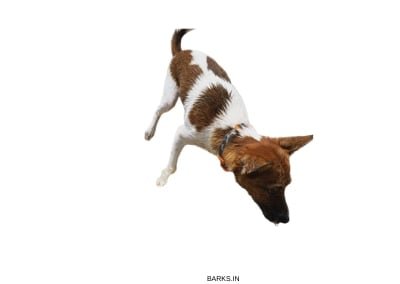
| Classification | ANKC: Terrier (Group 2) AKC: Terrier |
| Weight | 5 – 6.5 kg |
| Height | 23 – 25.5 cm |
| Coat | Double-coat, medium in length, hairy and harsh |
The Tenterfield Terrier is a small-sized dog that is extremely agile and alert. They have a square-shaped body, wedge-shaped head, with erect ears. People in farms traditionally dock their tails to prevent injuries while they hunt for vermins in confined spaces.
These are low maintenance dogs. Their short-coats merely needs brushing once in a while and are healthy. They are just as happy on the farm as they are in an apartment.
Tenterfield Terrier Breed description

The Tenterfield Terrier is a lively dog. They are excellent companion dogs and, at the same time, able hunters. This breed of dog is invaluable to farms for their ability to keep the vermin population in check.
Small, compact, good nature and alertness are the hallmarks of this breed. They are alert and bark at the sight of strangers. However, their small size is not a good deterrent.
These dogs can accompany you on long runs and are equally comfortable sleeping in your lap. They are a versatile breed, excellent for the family. Kids love this dog because they are gentle and patient.
Health

The ancestors of the Tenterfield Terriers were landraces. Landraces are dogs that naturally adapted to life without any selective breeding giving them exceptional disease resistance.
These dogs are healthy, with an average life span of 13 years. They remain active throughout their life. The following are a few health issues that this dog suffers.
- Hypothyroidism is a condition where the thyroid gland malfunctions causing metabolic disorders in dogs.
- Lens Luxation is when the lens in the dog’s eyes get detached from its normal position. The color of the eye changes to grey.
Interesting facts

- Despite their small size, these are incredibly agile and can jump several feet high.
- They are an invaluable asset to a farmer for their ability to keep the vermin population in check.
- The Australian music icon Peter Allen’s grandfather Tenterfield Saddler owned several dogs. These dogs derive their name from his name.
- They are an excellent companion and good with kids.
Australian Staghound

History and Origin
The Australian Staghound is a native Australian dog breed. Information about this dog is sparse, and the Australian Kennel Council does not recognize this breed.
Some believe that the British brought Greyhounds and the Scottish Deerhound to the Australian shore as hunting dogs. The Australian Staghound is a cross between these two breeds.
Experts believe several hounds might be involved in producing this dog. Lack of scientific research and historical evidence make it difficult to pinpoint the precise origins of this dog.
Traits
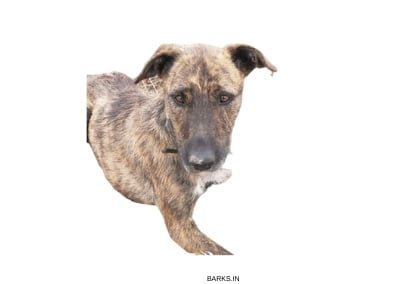
| Classification | Unrecognized |
| Weight | 25 – 30 kg |
| Height | 65 – 72 cm |
| Coat | Short and wiry |
The Australian Staghound is a sighthound that is medium to large. They are fast and robust dogs bred for hunting medium-sized game. These dogs use their sight to sense minute movements in the bush to track down prey.
The Australian Staghound is capable of quick acceleration. And with powerful jaws, they are capable of holding the prey. These dogs today are excellent feral pig hunters, helping protect the beautiful Australian wilderness.
These dogs have short and wiry coats that need occasional brushing. Due to the short hair, shedding is unnoticeable. Most dogs are brindle with white marks on their chest and feet.
Australian Staghound breed description
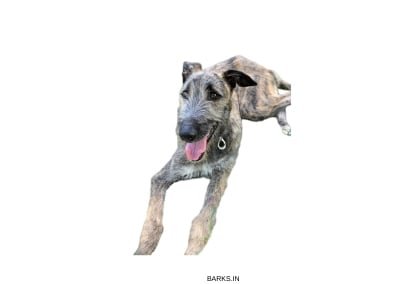
The Australian Staghound is a gentle and friendly dog. They are eager to please their master and have an excellent work rate. With seemingly limitless energy, they love to chase and have high prey-drive.
Being sighthounds, they need regular exercises to keep their hound muscles working in top condition. They require vast open spaces and don’t enjoy leash walking.
Potential dog owners should note these dogs require plenty of exercise. Dogs that don’t get sufficient exercise can become destructive. Like most sighthounds, owning a pair of dogs keeps them busy playing with each other.
Health

The Australian Staghound is a healthy breed of dog. The following are some health ailments that afflict this breed.
- Dermatitis is a skin condition that causes itchiness and hair loss in dogs. Learn how to treat Dermatitis using simple home remedies for dogs.
- This dog is prone to cuts and bruises while coursing their prey.
- They are also prone to muscular injuries, especially when overexercised.
Interesting facts

- One of the first Australian dog breeds to be developed.
- The Australian Staghound is the fastest native Australian dog.
- Fast and powerful, they can chase down and hold a large mammal like a pig.
Kangaroo Dog

History and Origin
The Australian Kangaroo dog is a sighthound that is native to Australia. Experts believe the Kangaroo dog as a type or a group of sighthounds and not as a distinct breed. This Australian breed of dog is fast, agile, and powerful.
Like the other sighthounds, they are hunting companion dogs that excel in coursing game. With the arrival of Engish to the Australian shores came several dogs from England. Australian plains and climate suited the English sighthounds such as the Greyhound, Irish Wolfhound, Scottish Deerhound, English Whippet, etc.
Experts assume that the Australian Kangaroo dog is a cross between these sighthounds and several other breeds. The precise history is unclear.
Traits

| Classification | Unrecognized |
| Weight | 25 – 30 kg |
| Height | 65 – 72 cm |
| Coat | Short and wiry |
The Australian Kangaroo dog is a sighthound. There are no breed standards or descriptions about this group of dogs. Generations of crossbreeding between different sighthounds based on individual goals have diversified this group.
As a sighthound, these dogs rely on their eyesight to spot game and use their speed for coursing. Some breeders breed for speed, while others breed for speed and stamina.
Kangaroo dog breed description

It is challenging to present a breed description for a group of dogs that is so diverse as the Kangaroo dog. Like all sighthounds, the Kangaroo dog is eager to work, intelligent, easy to train, and leggy.
They require vast open spaces to stretch their legs and are not suited for apartment living. If you like to run, they are an excellent running buddy. Being sighthounds, they have high prey-drive and will chase anything that runs, including people, cars, and other dogs.
Health
They are generally healthy, with an average life span of 13 to 15 years. They are prone to the following ailments.
- Older dogs are prone to muscle and skeletal issues.
- Genetic eye defects, such as canine hereditary cataract, is observed.
- This dog is prone to dental issues such as a cracked or broken tooth and other oral infections.
Interesting facts
- The Australian Kangaroo hound is a cross between several English sighthounds.
- The Kangaroo dog is not a distinct breed of dog, rather a group of dogs.
- This dog is a hunting companion where hunters use them for coursing game.
Bull Arab

History and Origin
The next dog in our list of Australian breed of dogs is the Bull Arab. Mike Hodgens, an Australian pig hunter, and his friends were the first people to develop this dog. Hodgens wanted a robust dog, with an ability to run, and fine-tuned senses.
Hodgens chose the sturdy English Bull Terrier, the fast Greyhound, and the specialist gundog, German Shorthaired Pointers. This combination of power, speed, and hunting abilities are what makes the Bull Arab a specialist pig dog.
The Bull Arab is more Bull Terrier than the other two breeds. They are 50% Bull Terrier, 25% Greyhound, and 25% German Shorthaired Pointer. The side effect of this combination was that these dogs also excel as guard dogs.
Traits
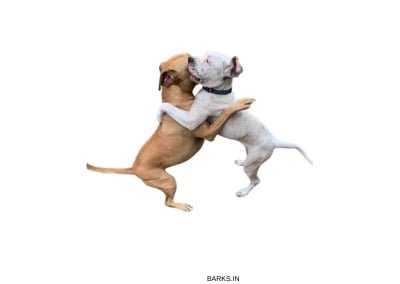
| Classification | Unrecognized |
| Weight | 30 – 50 kg |
| Height | 60 – 65 cm |
| Coat | Short single-coat |
The Bull Arab is a large breed of dog developed for hunting feral pigs in the Australian outback. They use their large size, robust muscles, and an exceptional sense of smell to locate and hold feral pigs by their ears. Bull Arabs are large dogs that are not for novice dog owners.
The Bull Arabs are easy to maintain dogs, and their short-coat does not require any special care. Bull Arabs body is muscular, which is well-balanced. All of their features are in proper proportion to each other.
Bull Arab breed description

The Bull Arab is a misunderstood dog. Like all large and powerful dogs, people incorrectly assume these dogs to be aggressive. In 1972 a pig hunter, Mike Hodgens, and his friends developed this dog. Soon they became a famous pig hunting dog throughout Australia.
The reputation of the Bull Arab took a hit primarily due to novice backyard breeders and people in the underground dogfighting circle. Novice owners were also responsible for their poor reputation due to dog attacks on people and pets.
These dogs require experienced handlers. They have Bull Terrier temperament, stubborn, and dominant. People who don’t have experience in dealing with a large breed will find this dog challenging to control. These dogs require consistent leadership to shape their character. Training a puppy is much easier than managing a large untrained dog.
Health
Bull Arabs are a healthy breed of dog with few ailments. The following are some ailments that afflict them.
- Some Bull Arabs are born deaf. This ailment is a hereditary condition that these dogs have inherited from the Bull Terrier.
- Skin allergies are also common in this breed.
Interesting facts

- Bull Arabs are a native Australian dog bred for pig hunting in the outback.
- Mike Hodgens and his friends developed this dog using 50% Bull Terrier, 25% Greyhound, and 25% Pointer.
- Bull Arabs are involved in attacks on people.
- They are powerful dogs that can hold a feral pig by its ears until hunters arrived.
Miniature Fox Terrier

History and Origin
The Miniature Fox Terrier is another beautiful Australian dog breed. The history of this breed is not well documented. Experts speculate that they are a cross between the English Smooth Fox Terrier and Toy Manchester Terriers.
Like all Terriers, these dogs excel in hunting. They are a specialist vermin hunter. Their small size and fine-tuned senses make them an exceptional rat and mice hunter.
Traits
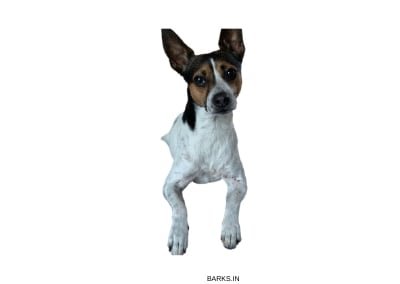
| Classification | ANKC: Terrier (Group 2) |
| Weight | 3.5 – 5.5 kg |
| Height | 24 – 30 cm |
| Coat | Smooth, short-coat |
The little Foxies are a small breed of dog. They have square-shaped and a compact body. Short legs, wedge-shaped head, and bat-like ears are the hallmark of this dog.
Despite their small size, these dogs are agile, athletic, and lively. They use their small size to squeeze through tiny holes, rabbit burrows, and confined spaces to flush out vermin.
Miniature Fox Terrier breed description

The general appearance of the Foxie reflects its high energy, playful character. They are affectionate dogs and form close bonds with their human family members. They are not only a capable vermin hunter but also an excellent companion dog.
This dog is versatile and can adapt to a wide range of living conditions. In farms, they are an invaluable asset, keeping rats in control. In apartments, they are an excellent companion dog.
These dogs have a lively character and have an innate ability to understand the mood of their owner. If you feel sad, they will offer you comfort by being close to you. If you are happy, they will be playful.
Health
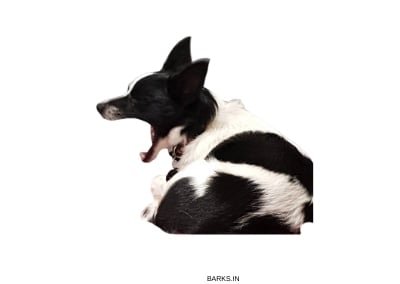
The Mini Foxies are healthy and have an average life span of 15 years. There are records of a dog that lived to be 20 years old. They are prone to ailments that affect small breeds, such as.
- Patellar luxation is a condition that affects the dog’s kneecap. Dogs with this condition have a loose knee cap that tends to get dislocated during play.
- Epilepsy is a life-threatening condition in which the dog suffers from seizures.
- Mange is a skin condition where the dog develops rashes on its skin.
- Cushing’s Disease is a malfunction of the adrenal glands causing them to produce too much steroid hormone.
Interesting facts
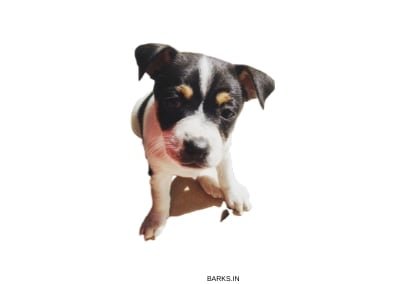
- The Mini Foxie has a high average life span of 15 years. Some dogs live well over 20 years.
- They are an exceptional vermin hunter.
- These dogs are good with kids and form close bonds with their human families.
Australian Koolie

History and Origin
The next dog on our list of Australian dog breed is the Australian Koolie. The Koolie is a native Australian dog with English ancestry. These dogs arrived from England in the 19th century and are the same type of Collie dogs that Thomas Hall used to create the ACDs.
The history behind their Koolie is fascinating. Historians say that the immigrants from Germany who could not pronounce Collie instead used the name, Coolie. Coolie eventually became Koolie.
The Australian Koolie closely resembles the Welsh Collie. Some speculate that the Australian Koolie descended from the Welsh Collie. However, there is no scientific evidence to support this claim.
Koolie Club of Australia promotes and preserves this dog. Interestingly the objective of this club is to encourage the working-lines of this dog. They believe formal recognition from the ANKC will be detrimental to the working-lines and has not sought recognization.
Traits

| Classification | Unrecognized |
| Weight | 22 – 26 kg |
| Height | 40 – 60 cm |
| Coat | Short and smooth or medium |
The Australian Koolie is a medium-sized herding dog. Like the Australian Cattle Dog and the Kelpie, these dogs can drove cattle over long distances. The dogs vary in size based on the region. For instance, the dogs from Queensland and New South Wales are taller than the ones in Victoria.
Koolie is not a show dog that conforms to set standards; instead, they are working dogs. Farmers and graziers prefer dogs that are agile, willing to work and have stamina. The Koolies excel in all of these areas, making them a renowned herding dog in Australia.
Koolie has a beautiful merled coat pattern. The coat ranges from short-smooth to medium-dense. Their body is longer than tall. Farmers prefer dogs with a short-coat as they are easy to maintain.
Australian Koolie breed description

Farmers and graziers choose dogs for their ability to work and not based on looks. Dogs that need to work must be trainable, intelligent, hardy, and agile. This process of selective breeding has made the Koolie a much sought after herding icon.
The Koolie has a balanced temperament, never aggressive, eager to learn, and patient. These dogs excel in various service roles such as herding, competitive canine sports, droving, etc.. The Koolie is also an excellent companion dog, accompanying its master in the field.
Like all working dogs, these dogs require space to live. They don’t do well in apartments or small homes. Koolie also requires activities that match their energy levels. Novice dog owners will find handling a Koolie challenging.
Health
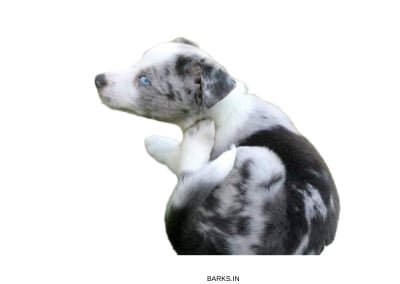
Breeders choose dogs that work as their breeding stock, making the Koolie a healthy breed of dog. They suffer from the following ailments.
- The Koolie suffers from hip and elbow issues. Hip dysplasia and elbow dysplasia are painful conditions that require veterinary care.
- Studies have shown that the merle gene causes blindness in dogs.
- Epilepsy is a life-threatening condition in which the dog suffers from seizures.
Interesting facts
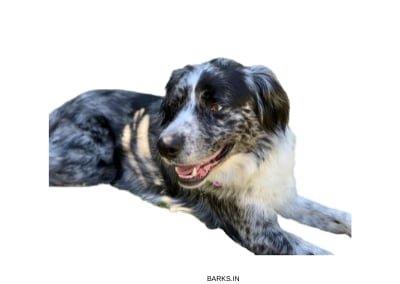
- The Koolie, Cattle dog, Stumpy tail cattle dog, and Kelpie all share the same ancestor.
- The average life span for the Koolie is 15 years.
- Farmers use and breed these dogs to work in fields. There are not show-line Koolies.
- The Koolie excels in obedience activities. They are highly intelligent, like the German Shepherd.
Beaglier

History and Origin
The Beaglier is a modern breed of from designer dogs Australia. In the 1990s, some fancier crossed a Beagle and a Cavalier King Charles Spaniel to produce the Beaglier.
The goal of the breeders was to take two delightful dogs and cross them to produce a dog that combines the best of the two breeds. Beagliers are healthy, small-size, energetic, and lively dogs with excellent temperament.
Traits

| Classification | Unrecognized Mixed breed |
| Weight | 4 – 8 kg |
| Height | 25 – 35 cm |
| Coat | Short and smooth |
The Beaglier is a small and mixed dog breed. There are no standards that exist for this dog as they are a new breed of dog. Small, healthy, and with a temperament that suits everyone in the family, these dogs are very famous in Australia.
Health
Beaglier is a modern breed of dog, bred to be healthy. The average life span is 14 years. Being a modern breed, studies on their health are non-existent.
Interesting Facts

- The Beaglier is a mix between a Beagle and a Cavalier King Charles Spaniel.
- They are a designer breed, suitable for the entire family.
Labradoodle

History and Origin
The Labradoodle is a mixed breed of dog developed by Wally Conron. He crossed a Labrador with a Poodle to produce the Labradoodle. The Labradoodle is an Australian breed of dog bred as a guide dog. The idea behind cross the Labrador with a Poodle was to create a hypoallergic dog that is suitable for people who have allergies.
Unfortunately, Labradoodle triggered a frenzy in crossbreeding with people trying to create every possible kind of “Doodle.” No major Kennel Club recognizes the Labradoodle. Australian breeders of late are breeding Labradoodle to conform to a standard and eventual recognization.
Traits

| Classification | Unrecognized Mixed breed |
| Weight | 25 – 30 kg |
| Height | 55 – 60 cm |
| Coat | Fleece double-coat |
Like all mixed-breed dogs, Labradoodle puppies don’t conform to fixed standards. While these dogs look alike, with fleece hair, medium to large size, temperament and behavior greatly vary.
Labradoodle breed description
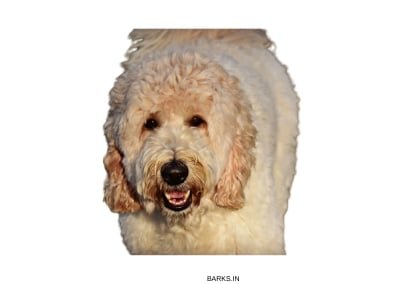
The Labradoodle is an intelligent, friendly, and energetic dog. They inherit this trait from both Labrador and the Poodle. They are a kid-safe dog. Labradoodles, like the Labrador, are fond of water and are excellent swimmers. The Australian Labradoodles also has other breeds of dog in its lineage, unlike the Labradoodle.
Health
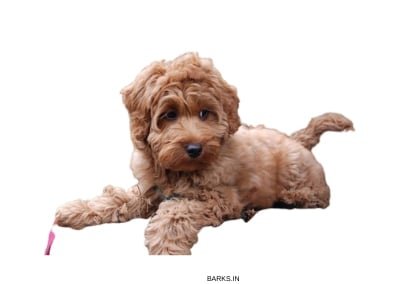
The following are some ailments that this dog suffers.
- The Labradoodle suffers from hip and elbow issues. Hip dysplasia and elbow dysplasia are painful conditions that require veterinary care.
- These dogs are prone to progressive retinal atrophy, which causes blindness.
- Some Labradoodles also suffer from Addison’s disease.
Interesting facts

- Labradoodle is a mixed breed produced by crossing Labrador Retriever with a Poodle.
- Wally Conron, a breeder, wanted a hypoallergic guide dog for people with allergies. Labradoodles with their fleece hair are hypoallergic and make excellent guides for people with disabilities.
- Labradoodle triggered a frenzy of crossbreeding to produce every kind of doodle. Wally Conron regretted his decision to produce this dog.
Australian Shepherd

History and Origin
Are you wondering why the Australian Shepherd, the Aussie, is the last dog on our list? It is because the Australian Shepherd is not Australian! People still debate and argue the precise history of this dog. Most agree despite their name, the Australian Shepherd is not a product of Australia, but beyond that, there is little consensus about their origin.
The best guess on their origin is that in the mid-18th-century several shepherd dogs were working, interbreeding between these dogs were a common practice.
In the early 19th century, ranchers used these interbred shepherd dogs to accompany their imported sheep from Australia, giving this dog its name. The Aussie is a result of circumstances than selective breeding. They are more American than Australian. American Shepherds are a more appropriate name for these dogs.
Traits

The Aussie is a medium-sized dog with a solid frame. These dogs occur in several beautiful colors solid black, liver, and blue/red merle with various white and copper markings. Tricolored Aussie is one that has a black or red solid color with white and copper markings.
Australian Shepherd breed description

The beautiful Australian Shepherd dogs are agile, active, and intelligent. Considered as one of the world’s best herding, they are eager learners, keen to please, and a delightful companion. Versatility is the hallmark of this dog.
The American Kennel Club describes their personality as “attentive and animated, lithe and agile, solid and muscular without cloddiness.”
Australian Shepherd dogs rank 26th in AKC’s popular dog breeds list. They are not just shepherds but also loyal and joyful companions.
Australian Shepherd dogs, when unexercised and left alone, invent games and activities. People often mistake this behavior as hyperactivity. Most people find their dogs running a few laps around their homes to left off unspent energy.
If you plan on getting this dog, learn about their energy levels and exercise requirements. Shepherd dogs are hyperactive and need regular exercise to spend their energy positively.
Health
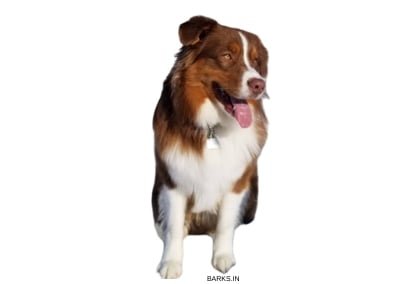
The Australian Shepherd is a healthy breed of dog. The average life span is between 11 to 13 years. These dogs suffer from eye-related issues, hip dysplasia, skin issues due to over-exposure to sunlight, and muscle injuries. This dog also suffers from Cushing’s Disease is a malfunction of the adrenal glands causing them to produce too much steroid hormone.
Interesting facts
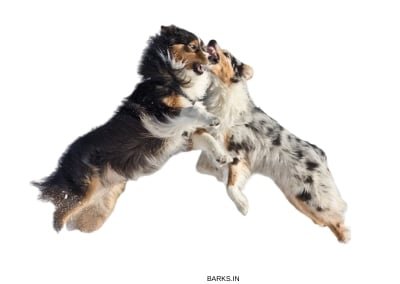
- Australian Shepherd, despite their misleading name, is not an Australian dog.
- Miniature Australian Shepherd is a smaller variant of the Aussie.
- These dogs are closely related to the English Shepherd and Border Collie.
- Aussie is one of the world’s best shepherding dogs.
- Aussie is a movie star; this breed of dog has starred in many Hollywood movies.
- This dog ranks 22nd in the list of world’s most dangerous dogs.
Australian Shepherd Dog Mixes
The following dog breeds are some popular mixes with Australian dogs.
- Cairn Australian Shepterrier = Cairn Terrier X Aussie
- Alaskan Malamute Aussie Mix = Alaskan Malamute X Aussie
- English Cotralian = English Cocker Spaniel X Aussie
- Australian Retriever = Golden Retriever X Aussie
Conclusion: Australian dog breeds
Australia has given the world some of the best, hardy, cattle dogs the world has ever seen. These are gems of the canine world. People like Thomas Hall, Robert Kaleski, and the Bagust family played a vital role in the development of the Halls Heeler. The descendants of Halls Heelers are today’s champions in herding and droving. These magnificent dogs have been influential in the Australian cattle operations.

